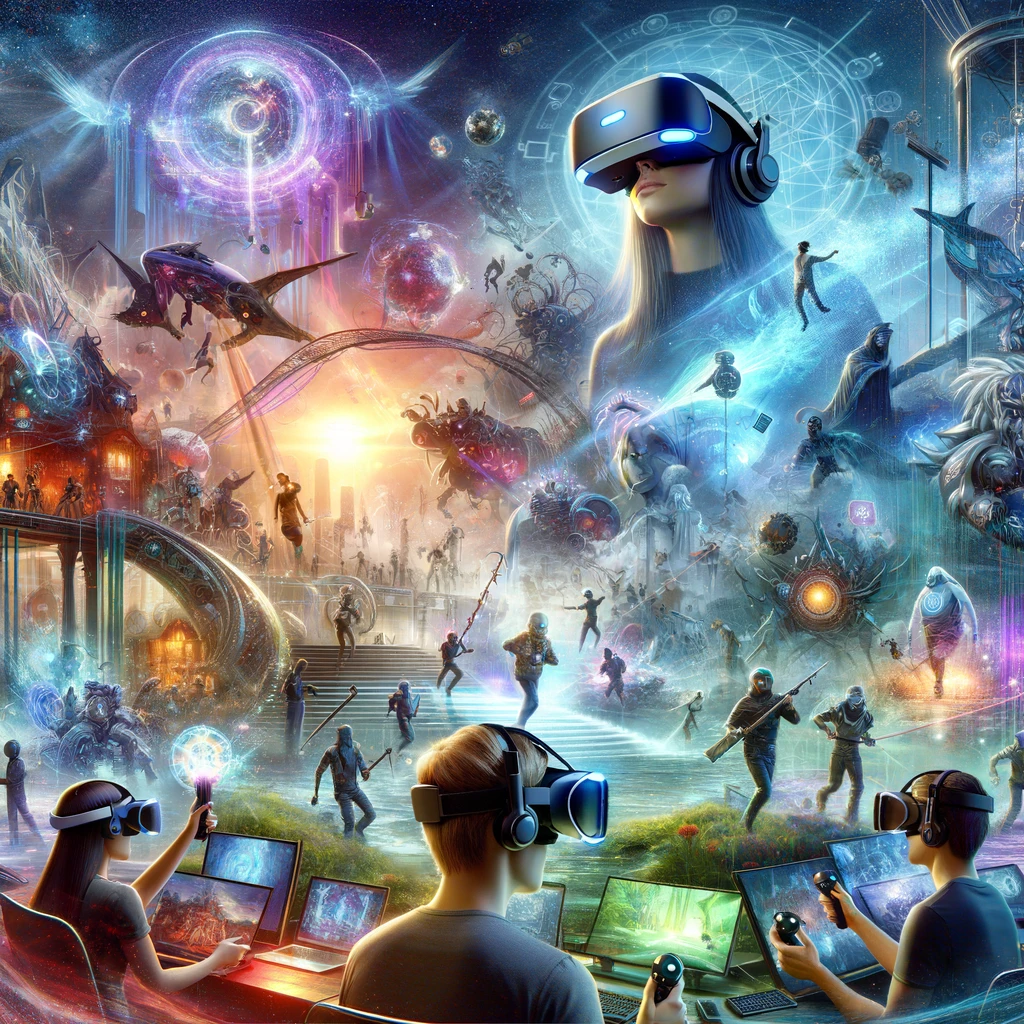The gaming world has been on an exhilarating journey, evolving from simple pixelated screens to the immersive realms of Virtual Reality (VR). This transformation has not only changed the landscape of gaming but has also offered a glimpse into the future of digital entertainment. The rise of VR in gaming marks a significant milestone, bringing to life the dreams of gamers and developers alike, who have long envisioned a future where the boundaries between the virtual and the real blur into insignificance. This advent of VR technology has revolutionized the way we interact with games, offering unprecedented levels of immersion and engagement. As we stand at the cusp of this new era, the journey of VR in gaming unfolds as a testament to human ingenuity and the ceaseless pursuit of pushing the limits of what’s possible. In this exploration, we delve into the technological advancements, increased accessibility, and the expanding universe of content that VR brings to the gaming industry, painting a vivid picture of its rise and the promising horizon that lies ahead.
The rise of Virtual Reality (VR) in gaming represents one of the most exciting technological advancements in recent years, reshaping how gamers experience interactive entertainment. This evolution is marked by several key developments and impacts:
1. The Evolution of Virtual Reality Technology
The rise of Virtual Reality (VR) gaming has been fueled by major advancements in VR technology, transitioning from an expensive, niche application to a mainstream entertainment medium. This shift was catalyzed by the introduction of affordable, consumer-friendly VR devices like the Oculus Rift, HTC Vive, and PlayStation VR. These platforms made VR more accessible, offering immersive gaming experiences with realistic visuals, precise motion tracking, and enveloping soundscapes. The continuous improvement of VR hardware has played a crucial role in enhancing the immersive experience of VR gaming, allowing it to captivate a broader audience and redefine the boundaries of interactive entertainment.
2. Increased Accessibility
Initially, high costs and the need for powerful computing hardware limited VR gaming to enthusiasts and early adopters. However, over time, the cost of VR equipment has decreased, making it more accessible to a wider audience. Additionally, the introduction of standalone VR headsets, which do not require connection to a PC or console, has further broadened the accessibility of VR gaming.
3. Enhanced Gaming Experience
VR gaming has captivated a wide audience by offering an immersive gaming experience that transcends traditional screen-based interaction. Players are no longer mere observers but become integral parts of the game world, experiencing adventures firsthand. This leap in realism and engagement is further augmented by VR’s ability to facilitate social and multiplayer experiences. Through online VR platforms and socially interactive games, players can connect, collaborate, and compete in virtual spaces. These advancements have not only enriched the social fabric of gaming but have also broadened the scope for more innovative and interactive gameplay.
4. Immersion and Interactivity
Virtual reality gaming transports players into fully immersive virtual environments, where the use of VR headsets provides a profound sense of presence, as if they were truly part of the game world. This immersive experience is enhanced by high levels of interactivity; players can move and interact within the game in a natural and intuitive way, using motion controllers or other devices. This not only makes the gameplay more engaging and realistic but also gives players a greater sense of control and involvement in the virtual world.
5. Challenges and Opportunities
Despite its growth, VR gaming faces challenges such as motion sickness in some players, the need for more space to play safely, and the ongoing requirement for technological improvements. However, these challenges also present opportunities for innovation in VR hardware and software development, aiming to overcome these hurdles and enhance the VR gaming experience further.
6. Future Prospects
The future of VR gaming looks promising, with potential advancements in augmented reality (AR) integration, AI-driven interactive storytelling, and further improvements in hardware performance and affordability. These developments could lead to even more immersive and realistic gaming experiences, blurring the lines between virtual and reality.
7. Diverse Gaming Experiences
VR gaming has drastically broadened the spectrum of gaming experiences available to players, introducing a myriad of genres and adventures that cater to varied tastes and interests. With the advent of VR technology, players can now dive into action-filled first-person shooters, engage in intricate puzzle-solving adventures, or endure the thrills of horror games, all with an unprecedented level of immersion. Racing enthusiasts can feel the adrenaline of high-speed competitions, while lovers of exploration can traverse vast and detailed worlds as if they were truly there. This diversity ensures that regardless of one’s gaming preference, the world of VR gaming offers an engaging, immersive experience that transcends traditional gaming boundaries.
Read more
Conclusion
Virtual reality gaming represents a transformative shift in the gaming industry, introducing unprecedented levels of immersion and interactivity. This evolution, powered by technological advancements and an expanding market, positions VR gaming as a significant business opportunity for both enthusiasts and entrepreneurs. Beyond mere technological progress, VR gaming is reshaping how stories are experienced, worlds are explored, and connections are made, promising a future where the boundaries of interactive entertainment continue to expand.







